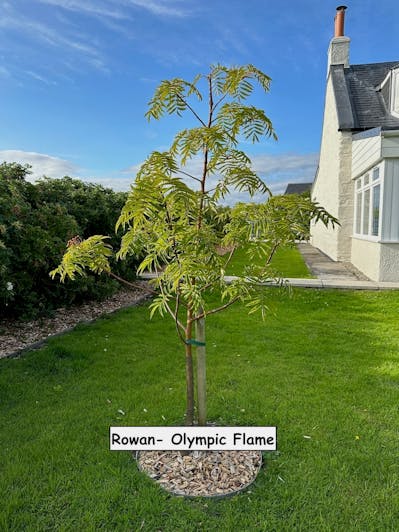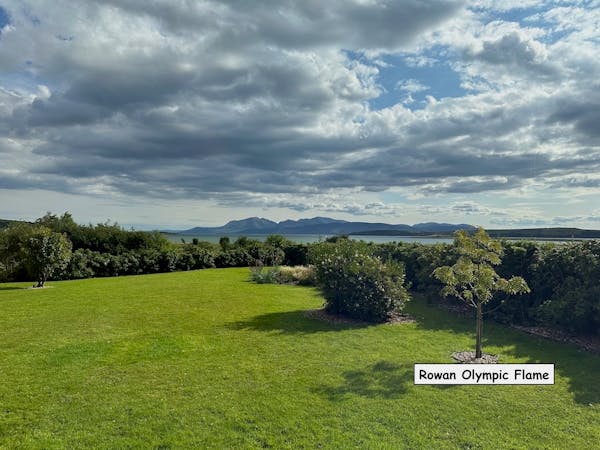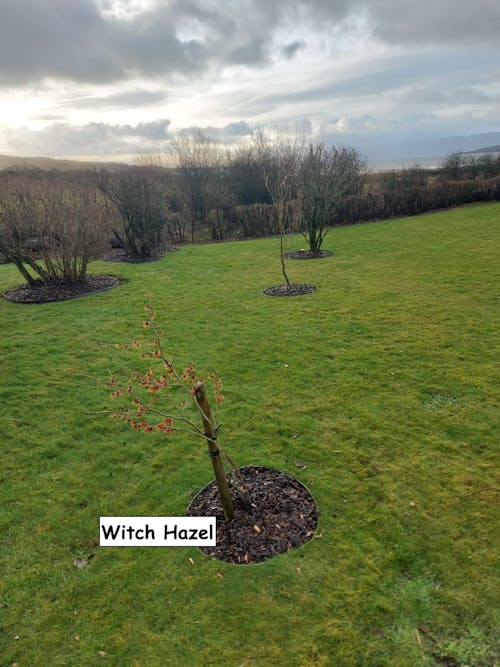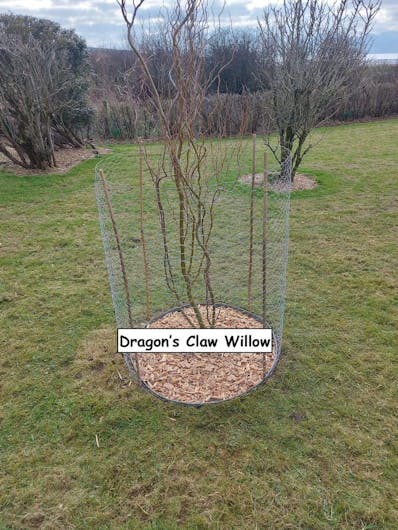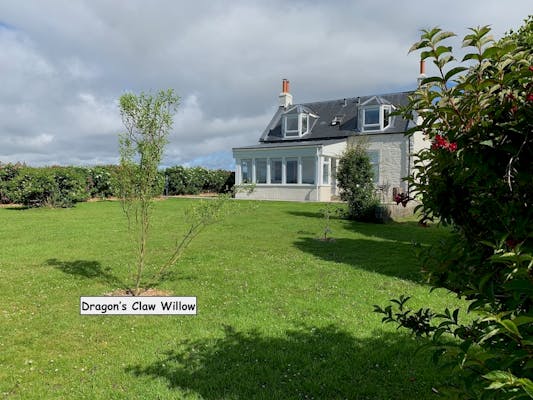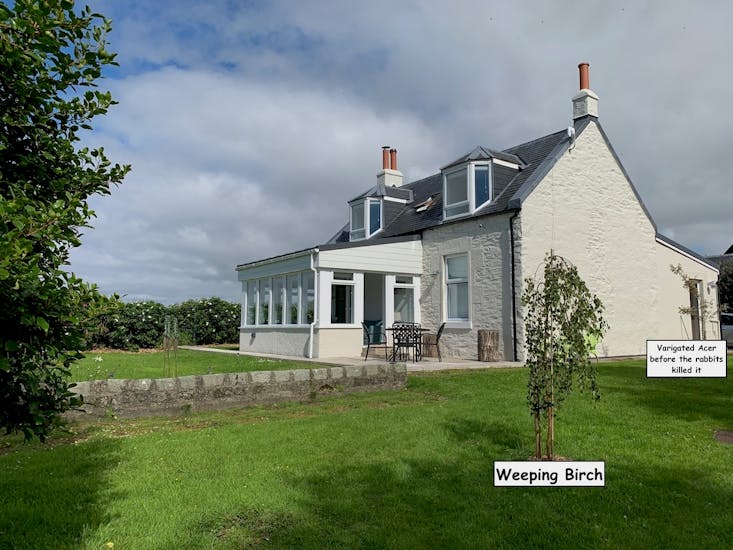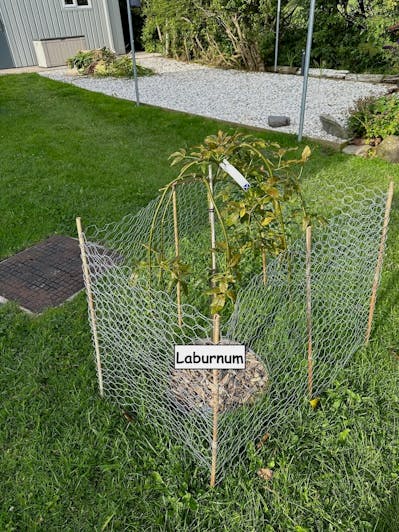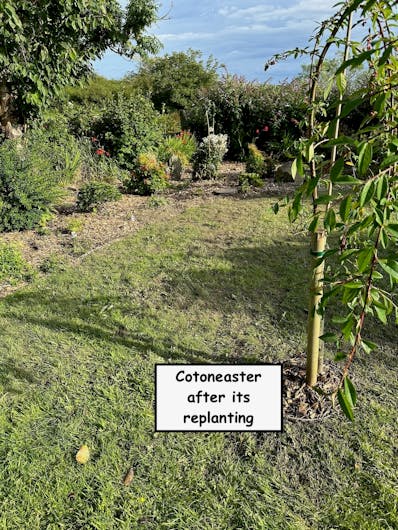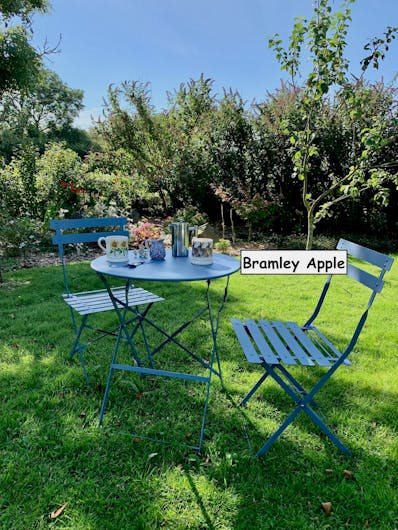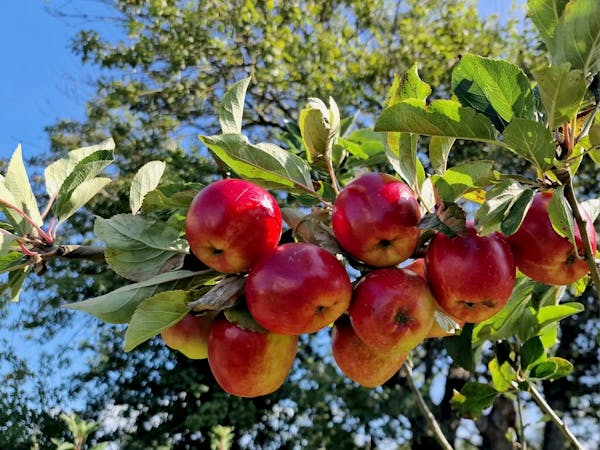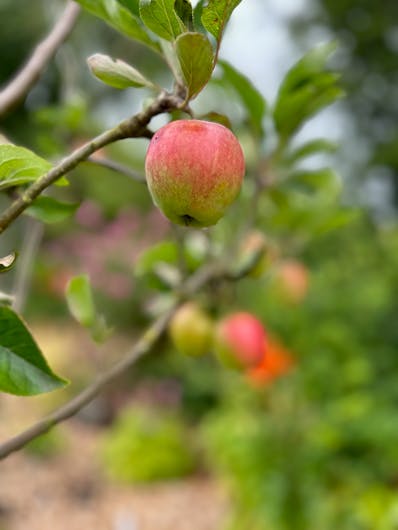
Trees are the heartbeat of our environment. They work as air and water filters, whilst providing shelter and food for birds and wildlife. And as if that is not enough, they are beautiful - a kaleidoscope of shapes and colours. It is often said that being around trees reduces stress and generally makes us feel good, and I for one can vouch for this🌳
"In nature, nothing is perfect and everything is perfect. Trees can be contorted, bent in weird ways, and they're still beautiful." - Alice Walker
I've made an effort to find trees well-suited to my coastal environment. Even though they have been described as suitable, I've been mindful of the strong winds that can blast Seaview and opted for varieties that won't grow too tall. Additionally, I've sought trees that offer year-round interest and support local birds and wildlife with food and shelter. Here is a little about the trees you will find in the garden at Seaview Cottage.
Sorbus ulleungensis ‘Olympic Flame’ – Rowan
I chose the Rowan tree for a variety of reasons, it’s a small deciduous tree with gorgeous, glossy green leaves in summer, which turn a fiery orange and red in autumn and then delight with clusters of vibrant red berries in October - which provide a feast for the birds. As well as being a beautiful tree, the Rowan has traditionally been planted near homes in Scotland as it is said to protect against bad luck. Who wouldn’t welcome a little of nature’s magical protection?
Hamamelis Jelena - Witch Hazel
Witch Hazel was chosen for winter interest as that is when it produces it’s unusual yellow/orange spidery flowers. It has a rather spicy fragrance, which bees seem to love in early spring. This ‘off season’ flowering provides food for bees at time when not much else is around.
Salix Tortuosa - Corkscrew - Dragons Claw Willow
Dragon’s Claw Willow, this one has been a contentious choice as, so far, my mum and my husband have yet to be convinced of its charm. But that’s the very thing I like about it! It has a quirky, unconventional style with its fantastic twisty branches and leaves. I hope as it grows it’s twisted red stems will turn it into a natural sculpture come winter. Perhaps in time it will charm the sceptics?
Acer Carnival - Variegated Field Maple Tree
Picked for it’s hardiness and popularity with native birds, I had hoped this would be great addition to the garden. Unfortunately, it proved very popular with rabbits and they stripped its soft, young bark so severely that the tree died. As a result, we quickly ‘caged’ the other young trees lest they meet a similar fate.
Betula pendula 'Youngii' – Weeping Birch
I love weeping trees, similar to ornamental grasses, they are like the graceful dancers of the garden. The Weeping Birch has a compact shape with long, graceful branches that sweep the ground in summer. A deciduous tree, I am hoping that as it matures its white bark will give the tree a beautiful structural form through winter. This tree replaced the Weeping Cherry that succumbed to disease the previous year, so far it has remained healthy🤞
Laburnum alpinum 'Pendulum' Tree
I picked out this deciduous tree simply because I love yellow, and graceful, swaying, weeping trees! They say it's well suited to coastal gardens... Well, we'll have to wait and see! It's a relatively recent addition, so we're keeping an eye on it to make sure it settles into its new home.
Cotoneaster Hybridus Pendulus - Cotoneaster Tree
Weeping tree again – what can I say, I can’t resist their graceful charm. This is a small evergreen variety of Cotoneaster. It has dark, polished, green leaves which show off the small white flowers that bloom in summer and is very popular with bees – always welcome in any garden🐝. I particularly love the clusters of red berries that cover the tree in autumn, which are a great source of winter food for wildlife and birds. It was doing very well, unfortunately we had to dig up part of the garden last summer to repair the septic pipe, which involved a lot of exploratory work (we had no idea where the pipe was !!!) and that meant we had to dig up the Cotoneaster. We kept as much earth as possible around the roots and wrapped them all up in hessian until we could replant. So far it seems to be recovering well from this traumatic event and should be looking good by summer.
Malus ‘Bramley, Katy and Discovery’- Apple Trees
I planted the Bramley sapling back in 2019 and it is well established now. At some point during the renovation period the tree acquired a mysterious break ??? Fortunately, the tree survived and now has a rather quirky gnarly structure that I quite like. It is ready for picking in October. Planted in 2022, the Katy and Discovery varieties were both picked for their smaller size and suitability to the west coast of Scotland, and of course their popularity as eating apples. Both bore fruit last year and were surprisingly untouched by pests and diseases. Whether that was sheer luck, or due to the tree’s resilience, I’m not sure. I have spoken with people whose whole crop last year was blighted with bugs! We will wait and see what happens this summer. Discovery is ready for picking in August and Katy in September. 🍎
